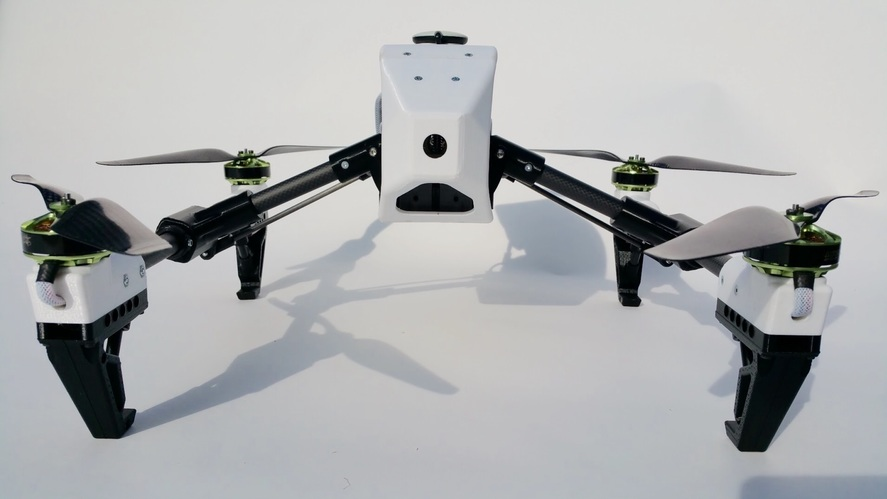![3D printed drone with carbon fiber components [Source: Sitherus - Pinshape ]](https://fabbaloo.com/wp-content/uploads/2020/05/drone1_img_5eb08fa98683a.png) 3D printed drone with carbon fiber components [Source: Sitherus – Pinshape ]
3D printed drone with carbon fiber components [Source: Sitherus – Pinshape ]
Charles Goulding, Preeti Sulibhavi, and Peter Favata of R&D Tax Savers explore 3D printing as an alternative to Chinese sourcing for drone components.
With the recent drone attack on Saudi oil infrastructure, drones are front page news. The new Gerald Butler movie thriller Angel Has Fallen opens up with a jaw-dropping drone attack on the U.S. President, played by Morgan Freeman.
A bipartisan group of U.S. Senators has recently proposed a bill that would prohibit U.S. government agencies from buying drones from China. The bill’s co-sponsors include Republicans Marco Rubio of Florida, Tom Cotton from Arkansas, and Josh Hawley of Missouri, as well as Democrats Chris Murphy and Richard Blumenthal of Connecticut.
The U.S. interior department has 674 drones and surprisingly they are all either made in China or comprised of Chinese components. U.S. security agencies, including Homeland Security, are concerned that Chinese drones could provide data back to China.
![[Source: Geospatial World ]](https://fabbaloo.com/wp-content/uploads/2020/05/drone2_img_5eb08faa2882f.jpg) [Source: Geospatial World ]
[Source: Geospatial World ]
In this writer’s opinion, there is no reason whatsoever for our federal agencies to purchase drone components from China. Virtually all of these components can be 3D printed in the U.S. or another country.
Our federal government, including multiple military branches, has made large investments to support homeland drone technology investment. Additionally, U.S. companies that are engaged in 3D printing drone components and drone technology development may be eligible for federal and state R&D tax credits, which are available to stimulate innovation.
The Research & Development Tax Credit
Enacted in 1981, the now permanent Federal Research and Development (R&D) Tax Credit allows a credit that typically ranges from 4%-7% of eligible spending for new and improved products and processes. Qualified research must meet the following four criteria:
-
Must be technological in nature
-
Must be a component of the taxpayer’s business
-
Must represent R&D in the experimental sense and generally includes all such costs related to the development or improvement of a product or process
-
Must eliminate uncertainty through a process of experimentation that considers one or more alternatives
Eligible costs include US employee wages, cost of supplies consumed in the R&D process, cost of pre-production testing, US contract research expenses, and certain costs associated with developing a patent.
On December 18, 2015, President Obama signed the PATH Act, making the R&D Tax Credit permanent. Since 2016, the R&D credit has been used to offset Alternative Minimum Tax (AMT) for companies with revenue below $50MM and, startup businesses can obtain up to $250,000 per year in payroll tax cash rebates for up to five years.
Conclusion
![Drone completely 3D printed by Sculpteo Intern Alexis Massol [Source: Sculpteo ]](https://fabbaloo.com/wp-content/uploads/2020/05/drone3_img_5eb08faa730e1.jpg) Drone completely 3D printed by Sculpteo Intern Alexis Massol [Source: Sculpteo ]
Drone completely 3D printed by Sculpteo Intern Alexis Massol [Source: Sculpteo ]
Drones are in the news and the 3D printing industry may have a new global business opportunity. For U.S. companies, drone development activities could yield R&D tax credits, and 3D printing is a prime indicator of eligibility.

